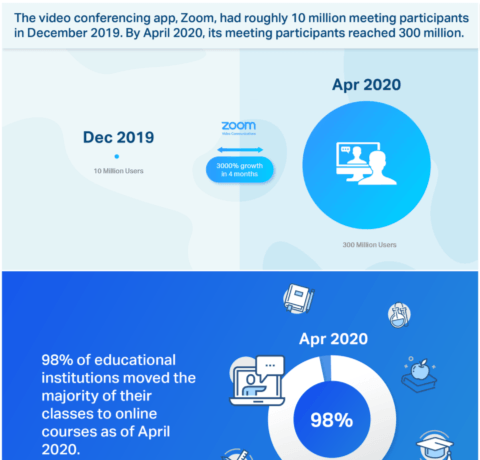




8 Video Learning And Video Stats Post-Coronavirus—Infographic
Are you interested in video learning stats? This infographic shares the most recent, post-COVID statistics around online learning in a higher education environment and online video usage. It shares data that covers use of video conferencing tools like Zoom, video streaming services like Netflix and YouTube, and use of online courses by students. Namely, with so many courses being forced into becoming online courses so quickly, this infographic sheds light on students’ opinions of their experience in online courses versus in-person courses. It’s clear that COVID-19 will leave some permanent effects on the educational system and the way it’s structured. This infographic sheds some light on the freshest data now emerging from the last few months as our society slowly re-adjusts from a quarantine lifestyle.
- The video conferencing app, Zoom, had roughly 10 million meeting participants in December 2019. By April 2020, its meeting participants reached 300 million.
- 98% of educational institutions moved the (-4 majority of their classes to online courses as of April 2020.
- 43% of educational institutions have invested in new online learning resources and tools as of April 2020.
- Of students who have taken both online and face-to-face classes, 85% said their online experience was better, or equally as effective as, their face-to-face classes.
- ompared to March 2019, the average YouTube views on meditation increased by 550/0as of this March. Workout video views increased by 200% and cooking videos by 100%.
- This past quarter was the best quarter to date for Netflix-bringing in 15.8 million new subscriptions worldwide
NETFLIX 15.8 Million Subscriptions ( Subscribe - According to Statista, 50% of survey respondents reported an increase in their video streaming use, as of May 31st.
- Video calling has more than doubled on both the Whatsapp and Facebook Messenger apps in areas hit hardest by COVID-19.
We can’t jump to any conclusions from our findings, but they suggest that video will continue to become an integral part of our daily lives.
Copy code
The code has been copied to clipboard!




